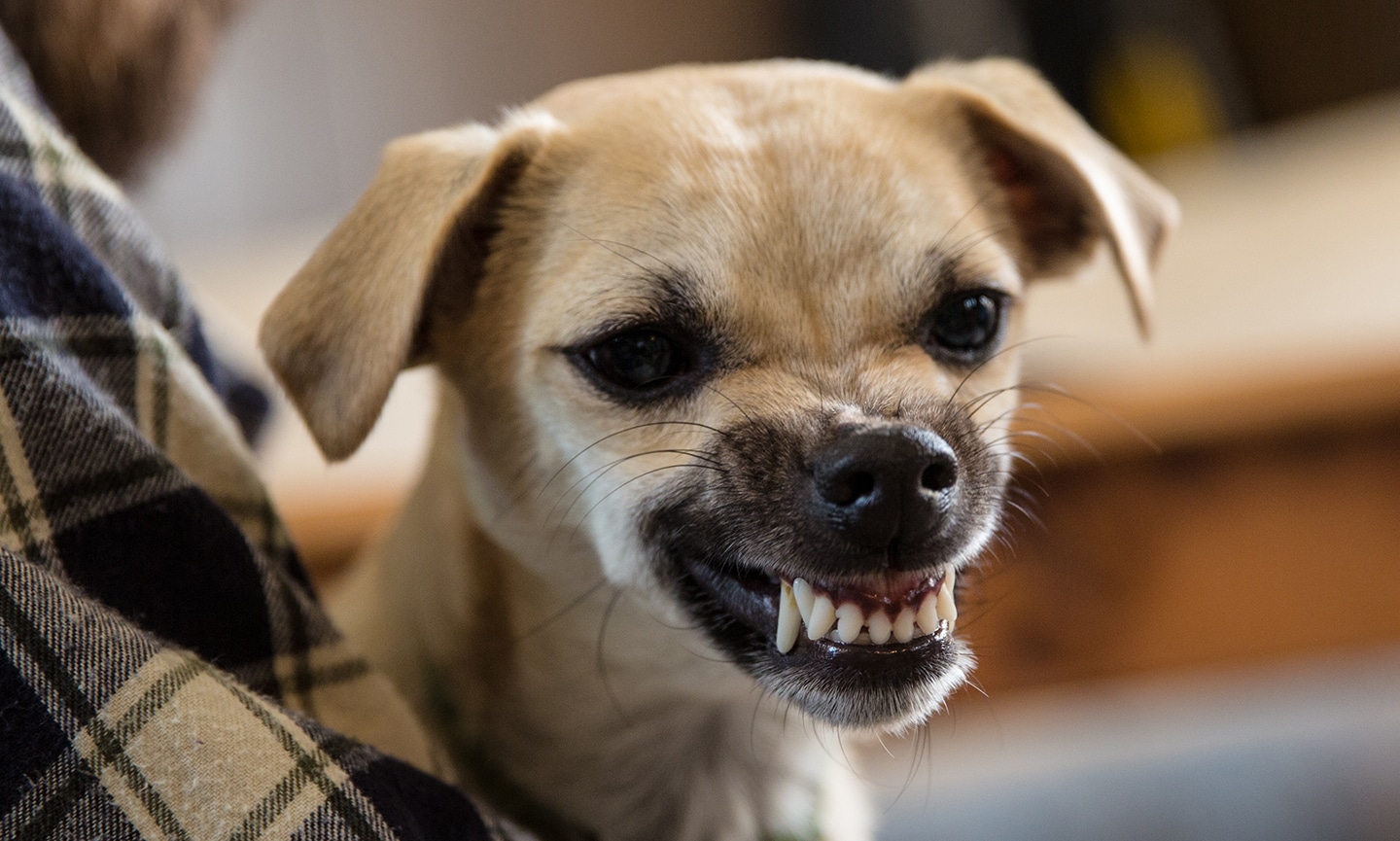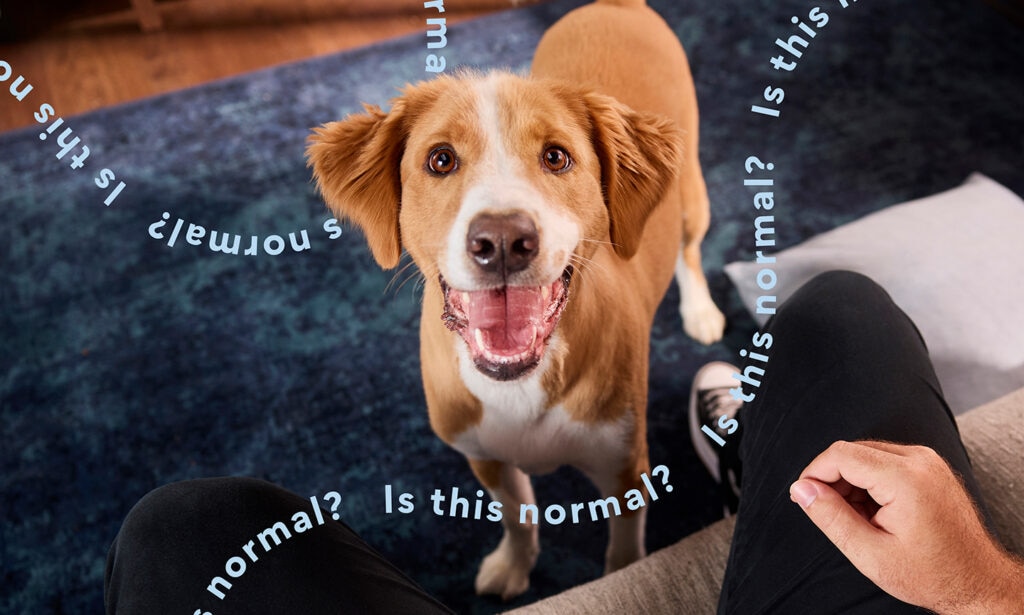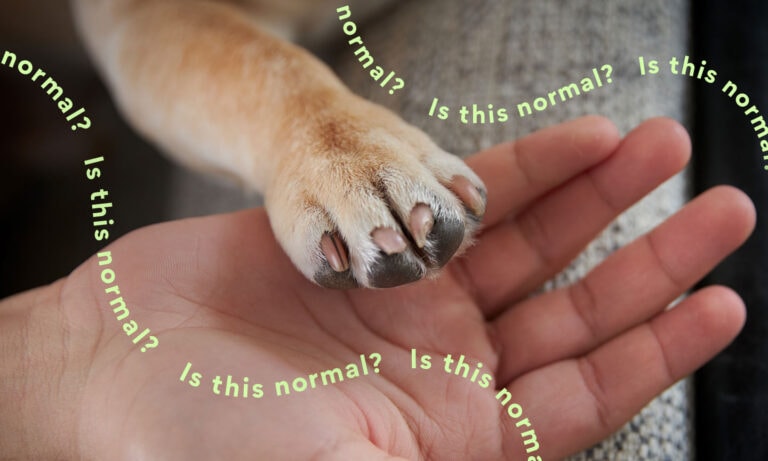Q:My dog will sometimes curve up the corners of their mouth and show some of their teeth. It almost reminds me of a human smile, but I’m not sure if this is something dogs also do. Is this normal? Can a dog smile? And if so, why do dogs smile?
A: Yes, dogs can physically smile, but a dog smile may not always mean that they are happy. It’s important to consider your pooch’s overall body language. By doing so, you'll have more clues to help determine if your furry friend is smiling because they’re happy or for some other reason.
In This Guide:
Can Dogs Smile?
More specifically: Can a dog position their mouth so it looks like what we humans would define as a smile? Yes!
“When the corners of the dog’s mouth, otherwise known as commissures, are pulled back— sometimes exposing teeth—humans commonly call that a smile,” says Russell Hartstein, CDBC, CPDT, a certified dog behavior consultant, trainer, and nutritionist at Fun Paw Care in Los Angeles.
Does that “smile” mean they are happy, the way a human smile (usually) means we are happy? It could—or it could mean something else entirely.
Why Do Dogs Smile? Does It Mean They’re Happy?

Chewy
Often, when humans smile, it’s because we feel happy or content. While yes, dogs do smile when they are happy, a smiling dog doesn’t always mean they’re happy.
A dog may smile for any of the below reasons, according to Hartstein:
- Happiness
- Stress
- Fear
- Aggression
So how do you know what your pooch is feeling? “It all depends on the subtleties of the dog's facial expressions, and overall body language and environment,” Hartstein says.
How To Identify a Happy Dog Smile
Jeannine Berger, DVM, DACVB, DACAW, CAWA, a veterinarian and animal behavior and welfare specialist at Mayfair Vet Care in Dixon, California, gives us a rundown of what a "happy" or "relaxed face" dog smile looks like.
This type of facial expression may include:
- Mouth slightly open
- Corners of the lips gently pulled back and upward
- Teeth often showing
For example:

Adri/iStock via Getty Images
Dr. Berger typically believes that dogs exhibiting this type of smile are indeed happy.
“They may have just engaged in a run or some play; are slightly panting; their mouth is slightly open; and the corners of the lips are drawn up, making us believe they are smiling,” Dr. Berger says.
This dog expression may evoke a smile from us and cause us to liken this to human body language. “Hence, we like to call it a smile in our dogs—it makes us happy, [and] we like to think they are happy,” she adds.
When Is a Smile Not a Smile?
Certain facial expressions could be mistaken for a happy smile but do not indicate happiness.
The Submissive Grin
Another canine expression that may resemble a smile, Dr. Berger explains, is something called the submissive grin. This expression often includes the following characteristics:
- Raised upper lip
- Exposed incisors
- Eyes often closed
Here's an example:

markuskessler/iStock via Getty Images
Dogs sometimes display the submissive grin when they’re unsure how to approach a human social interaction.
“They are not at all aggressive,” emphasizes Dr. Berger, “but they seem to be a bit unsure if they should approach or greet.”
Your canine companion may exhibit this expression to get across that they are not a threat. “It signals, ‘I am not a threat to you,’ similar to the expression a foal makes when they smack their lips when greeting an adult horse,” Dr. Berger says.
However, Dr. Berger points out that not all dogs display this specific type of grin. And the ones who do exhibit this behavior may even do it when they aren’t in an actual conflict situation.
That’s because somewhere along the way they were rewarded for doing it and now exhibit it almost as if it were a trick or a gimmick. (Maybe you’ve seen videos on social media of dogs making these faces when someone is pretending the dogs are in trouble.)
Considering this, Dr. Berger stresses that a dog's smile showing their pearly whites may not always mean the same thing.
“We should not assume it’s either friendly or aggressive without looking at the entire picture: the body language, the situation, and the circumstances,” she says. She adds that facial expressions in dogs can be challenging to read, even for animal behaviorists.
A Sign of Aggression
Both experts stress that it’s essential to pay attention to the bigger picture: Consider your dog’s whole body language, including body posture and tail position, as well as the surrounding environment. Is there any obvious threat present? Are there any other dogs around?
Paying attention to context is vital. This can help you determine if your furry friend’s smile signifies happiness or something else.
“Depending on the facial expressions and vocalizations in combination with the environment, a dog with his commissures pulled back can easily be misdiagnosed as a smile,” says Hartstein. “However, it can be aggression of some sort.”
A dog smiling accompanied by any of the of the following may be a sign of aggression:
- Snarling
- Growling
- Stiff body language
- Lip lifting horizontally to show more teeth
- Low head position
- Head sticking straight out
- The hair on their neck or back is standing up
- Panting
- White of eyes showing
- Staring
- Leaning forward or back
- Dilated pupils
For example:

markuskessler/iStock via Getty Images
Do Dogs Smile Because They Feel Guilty?
Even though you might think your dog smiles at you when they’re guilty, this isn’t the case. This is because, well, dogs don’t feel guilt.
“Studies have shown that guilt is not a feeling dogs have,” says Dr. Berger. “What they do understand is that their owners are not happy, and that submissive behaviors help them not to receive harsh punishment.”
So How Can We Tell If Our Dog Is Happy?
Like humans, dogs can also experience feelings of happiness. However, they may have different ways of showing it. In other words, they may not communicate this feeling of happiness or contentment just by smiling.
Although it may differ from dog to dog, experts share that happy dogs typically exhibit these common signs:
- Relaxed facial expression
- Soft eyes
- Soft, relaxed ears (depending on the dog breed)
- Slightly open mouth
- Wiggly body
- Animated, wagging tail
- Pupils not dilated
“I think most dog owners who observe their dogs closely in various situations know when their dogs are happy,” says Dr. Berger. “In general, I think humans are much better at reading when their dogs are happy than when their dogs are scared.”
How To Make Your Dog Happy
To help your pup be their happiest, make sure all their basic needs are met. These needs include a healthy diet, adequate rest, and mental and physical enrichment.
Start with a balanced dog food that's appropriate for your dog's age and size. Looking at the recommended life stage of dog food (puppy, adult, or senior) will make sure your pooch is staying healthy and feeling their best. Vet-recommended foods like Purina Pro Plan and Hill's Science Diet are good options.
Offering a good amount of mental and physical enrichment will keep your dog happy. Grab a leash and collar and take your dog for a walk daily, give them exciting enrichment toys to work their brain, and play with them to keep them engaged.
This content was medically reviewed by Wailani Sung, DVM, DACVB.
Learn more about dog behavior:
Share:


















